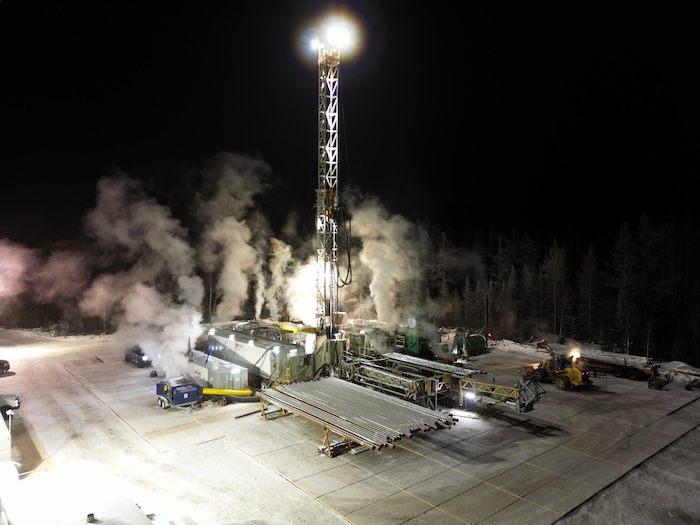The Politics of Helium
Helium, once known primarily for its niche industrial uses, has emerged as a strategic political asset amid rising geopolitical tensions and trade uncertainties. Its critical role in next-generation technologies such as semiconductors, space exploration, quantum computing, and medical imaging has elevated it from a valuable industrial gas to an indispensable strategic resource.
![]()
Helium as a critical commodity
Helium's unique properties, such as the fact it is chemically inert, non-toxic, non-flammable, lighter than air, and has a low boiling point, make it essential across a range of advanced applications. It cools superconducting magnets in MRI machines and quantum computers, pressurises rocket fuel systems, and helps create ultra-pure environments needed for semiconductor and fibre-optic cable manufacturing. These capabilities position helium as vital to sectors including healthcare, aerospace, and clean energy research.
Unlike many other critical minerals, helium cannot be synthetically produced or effectively recycled. Its low atomic mass results in rapid diffusion and significant transport loss, typically 0.2–0.5 percent per day during shipment (or 2.8-7.0 percent for a two-week voyage). These challenges make local, domestic sources increasingly attractive, especially for Western nations seeking supply chain resilience.
Greenland: The emerging frontier
Greenland, rich in untapped mineral resources, is gaining attention for more than just its rare earths — the country’s potential for primary helium development is also adding to its growing geopolitical relevance. Interest in Greenland’s resources spiked when U.S. President Donald Trump proposed purchasing the island, a move that while controversial, reflected strategic awareness of the Arctic's critical mineral potential.
Western governments are now funding geological exploration and supporting partnerships in Greenland, attracted by its democratic governance and geopolitical alignment. This focus aims to establish secure alternatives to politically unstable regions that dominate critical mineral supply chains.

Global helium supply: Fragile and concentrated
Current helium supply is dominated by a few producers, namely the U.S., Qatar, Russia, and Algeria, where helium is extracted as a byproduct of natural gas production. However, this supply chain is fragile and vulnerable to geopolitical disruptions.
In the US, the Federal Helium Reserve, once the cornerstone of global supply, held over 30 percent of the world’s helium. However, it has since been privatized and is nearing the end of its operational life. As American output declines, dependence on foreign sources becomes a reality, exposing the US to an additional risk: helium’s poor long-distance transport capabilities.
Primary vs. secondary helium
Over 95 percent of helium is produced as a secondary product from natural gas. However, growing demand and rising prices have catalyzed the development of ‘primary’ helium sources — geological formations where helium is the primary economic driver. Such reservoirs are rare but have been identified in North America, Africa, and Greenland.
Primary helium production offers a path to a more stable, independent supply. Unlike secondary helium, it is not tied to fossil fuel markets and can be developed with a specific focus on critical mineral strategy. This emerging industry represents a shift toward viewing helium as a core resource rather than a byproduct.
Helium, the US-China tech war, and its new strategic role
The broader US-China tech war has also played a role in helium’s emergence as a political asset. This war has reshaped global supply chains, impacting everything from rare earths to high-performance semiconductor chips. In response to Chinese dominance in critical mineral production and export, particularly in the chip sector, the US government has introduced various policies aimed at curbing this influence. This led to a ban on exports to 140 Chinese companies, with the intention of hindering Beijing’s chipmaking ambitions. In December 2024, China responded by introducing export tariffs on gallium, germanium, antimony, and other elements crucial to advanced manufacturing.
While China may not be a dominant global helium producer, the international scramble for supply chain security has prompted governments to reassess critical mineral inputs, particularly those essential to defense and high-tech manufacturing. Helium’s significance lies in its use in missile detection systems, advanced electronics, rockets, and aerospace exploration, making it a crucial factor in national security.
The urgent need for domestically sourced helium is growing. Nations are seeking to avoid reliance on volatile markets and are looking to secure robust, sustainable supplies from friendly jurisdictions. This is particularly important for healthcare systems, defense industries, and other crucial infrastructures.

Building resilient helium supply chains
As the US government tightens controls on critical minerals and increases tariffs on strategic materials from rival nations, helium-producing companies are poised to play a pivotal role in safeguarding supply chains.
Once a niche commodity, helium is now central to discussions of technological supremacy, energy independence, and national defense. The global race for helium mirrors broader competition over resources that power next-generation innovation. With rising geopolitical friction, companies that can provide secure, primary, and domestic helium are no longer just participants in the critical minerals market. They are strategic partners in the broader effort to bolster Western technological and economic security.
Thomas Abraham-James, CEO and Co-founder of Pulsar Helium, is a seasoned geologist with 17 years of experience in the discovery and development of mineral resources across North America, Australia, Africa, and Europe. He has been influential in helium exploration methodologies, co-authoring multiple publications including "The Principles of Helium Exploration". Thomas obtained his degree from the Australian National University and is a Fellow of the Australasian Institute of Mining and Metallurgy, the Geological Society of London (FSL), and the Society for Economic Geologists (FSEG).
Pulsar Helium | www.pulsarhelium.com
Author: Thomas Abraham-James
Volume: 2025 September/October








